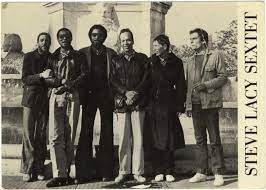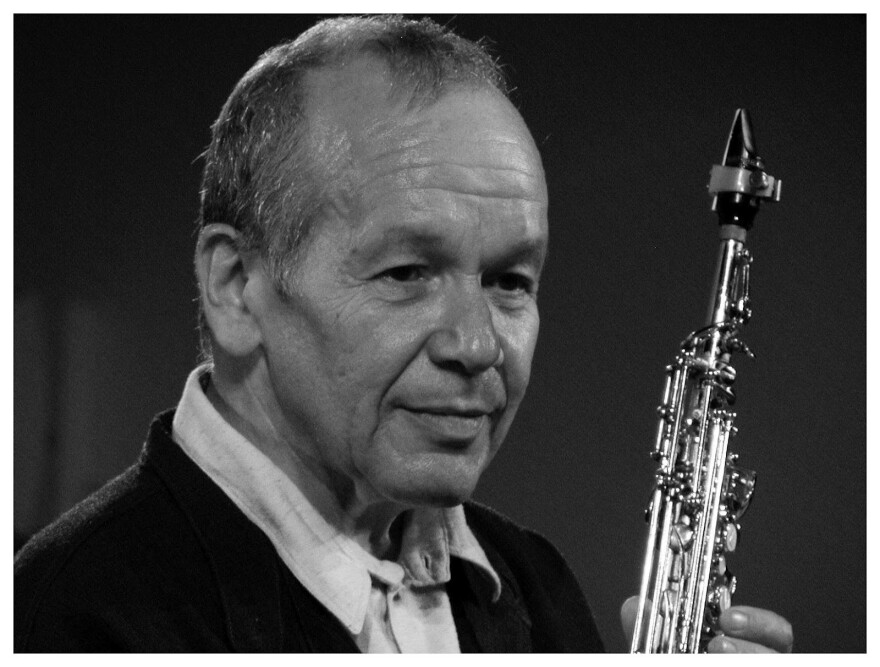I used to look forward to seeing Steve Lacy on his annual visits to the Iron Horse in Northampton. Few experiences made NoHo feel quite as cosmopolitan as an appearance by Lacy’s Paris-based sextet, which included the American expatriates Lacy, saxophonist Steve Potts, pianist Bobby Few, and drummers Oliver Johnson or John Betsch, as well as Lacy’s Swiss-born wife, singer and violinist Irene Aebi, and the French-born bassist Jean-Jacques Avinel. The group played a mix of Monk, Brechtian art song, Beat poems, melodious originals and, through the quacking sopranos of Lacy and Potts, a virtual conference of the ducks. Monk was a key centering devise in Lacy’s music, so no matter how far out it got, there was usually a landing zone called Thelonious in the distance.

Decades before Monk repertory bands became prominent in jazz, Lacy was the foremost specialist in Monk’s music besides Thelonious himself. His 1958 recording, Reflections: Steve Lacy Plays Thelonious Monk, was the first of its kind, and while Lacy steadily established himself as one of the most original and intriguing figures in jazz, a player who ran the stylistic gamut from New Orleans traditional to Euro post-modern, Monk’s music paralleled it all.
One of the keys to understanding the devotion Lacy had to Monk centers around the notoriously challenging soprano saxophone, which Lacy settled on as his exclusive instrument by the mid-’50’s. Finding modern music that was appropriate for the horn is what led him to Thelonious. As he told Mel Martin in this 1991 interview, “You must have the music to justify an instrument’s extensive use. The problem I had on this instrument was that I not only had to learn how to play it, I had to learn what to play on it because there was nothing written for it. I couldn’t play Charlie Parker tunes because they were too low…
“When I found the music of Monk I finally found music that fit that horn. Every one of his tunes fit it perfectly, so I started really studying his music but I also studied the songs of Webern because that also fit my horn. If someone wants to play soprano saxophone all their life, they must find someone else’s music or eventually their own that will make it worthwhile for them, the public, and everybody.”

July 23 is Steve Lacy’s 78th birthday anniversary. He was born in New York City in 1934, and early on played traditional jazz and swing on both soprano and clarinet. Sidney Bechet was a model, and by the early 50’s he was appearing at the Stuyvesant Casino and elsewhere with New Orleans legends Henry “Red” Allen and Pops Foster, Basie-ites Buck Clayton and Dicky Wells, and young piano lions Dave McKenna and Dick Wellstood, who were then striding into view. By 1955, he’d also begun playing with Cecil Taylor, a move that may have struck some as a dramatic stylistic leap, including the iconoclastic pianist himself. Taylor’s first question to Lacy was, “How come a young fellow like you is playing Dixieland?” Lacy, however, did not recognize a discontinuity between the traditional and Taylor’s music. He told Max Harrison in 1966, “Taylor seemed to be right in the tradition. As for harmony, he showed me that harmony is color, and I understood his color right away.”
Lacy appeared on Taylor’s first album in 1956, and was with the pianist at Newport the following year where Verve recorded their vigorous set that included “Nona’s Blues” (“One of the more traditional forms,” Taylor acerbically announced) and Billy Strayhorn’s “Johnny Come Lately.” Taylor also took him to see Monk, and through his music Lacy began to find an identity for himself. He told Mel Martin, “[Monk was] the best model I could find to help me get to my own stuff. I played that as long as I could before I started to uncover my own sound.”

Once Reflections was released, Lacy delivered a personal copy to his main man, and Monk apparently dug it. He hired the saxophonist for four months in 1960, and Lacy was with the big band that Monk appeared with at Lincoln Center in 1964.
Lacy elaborated on Monk’s importance not only to himself but to the emerging generation of free jazz players in his interview with Martin: “[Monk] provided appropriate structures to contain the type of improvisational material that we had discovered. What Monk had was the appropriate containers. He wrote the lines that made the guys sound good and that they liked to play. They developed a language and improvisation came naturally out of that material and it was a coherent whole…I was spoiled by Monk’s music because it was so good, so complete. You could play them over and over again, even just the heads. You could play them badly and they sounded good!”
Lacy was one of the most prolific recording artists of his generation, with well over 100 releases as a leader, and several dozen more as a sideman. With Mal Waldron, he made at least a dozen sessions over the course of forty-plus years, and they all still sound essential. Of his Monk-related sessions, one of the most renowned is School Days, which was culled from a 1963 performance recorded by Jimmy Giuffre, who’d formerly led a group with Lacy, at the Phase Two Coffeehouse in New York. It’s the first recorded collaboration between Lacy and trombonist Roswell Rudd, and whatever it lacks in audio fidelity it more than makes up for in musical vitality. Lacy and Rudd found common cause in the music of Monk and later Herbie Nichols, and School Days finds them in the outstanding company of bassist Henry Grimes and drummer Dennis Charles, who’d been with Lacy in Cecil Taylor’s Quartet in the ‘50’s. In the liner notes for School Days, Peter Kostakis wryly notes that the music may sound more like play than work, and there lies the secret to what makes the unfailingly melodic Lacy and the amazingly expressive Rudd, not to mention Monk, so enduringly enjoyable.
Rudd has been an essential custodian of Nichols’ musical legacy since he played with the pianist-composer in the ’60’s. In 1982, he and Lacy recorded Regeneration, which was equally divided between tunes by Nichols and Monk; two years later Lacy recorded an all-Nichols release, Change of Season. Here are Lacy and Rudd at The Iridium in 2004, only months before Lacy’s death on June 4 of that year, co-leading the group they called Monksiland and playing the Nichols original “Terpsichore.”